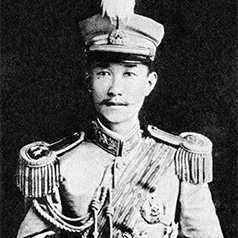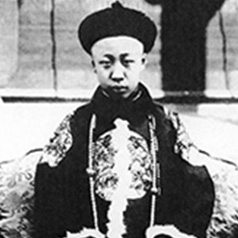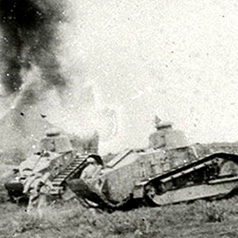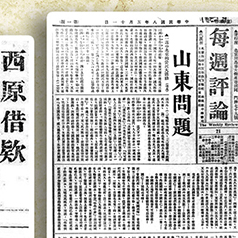
Internal and External Challenges for the New Republic (1912-1926)
Internal and External Challenges for the New Republic: an Overview
China was turbulent since the founding of the Republic. It started with Yuan Shikai’s autocratic rule, the Second Revolution, the Hongxian monarchy, the palace-council dispute, the Manchu Restoration, the Constitutional Protection War, and so forth. Meanwhile, Russia, Britain, and Japan actively invaded the Chinese territories including Outer Mongolia, Tibet, and Shandong. The new Republic was beleaguered inside and out.
Internal and External Challenges for the New Republic: an Overview
China was turbulent since the founding of the Republic. It started with Yuan Shikai’s autocratic rule, the Second Revolution, the Hongxian monarchy, the palace-council dispute, the Manchu Restoration, the Constitutional Protection War, and so forth. Meanwhile, Russia, Britain, and Japan actively invaded the Chinese territories including Outer Mongolia, Tibet, and Shandong. The new Republic was beleaguered inside and out.
(1) Yuan Shikai’s Autocracy and the Second Revolution
As the Provisional President of the Republic of China, Yuan Shikai strove to consolidate his dictatorship. This led to growing conflicts between him and the revolutionaries. The assassination of Song Jiaoren, the dismissal of several Kuomintang governors, and various other events that followed eventually set off the Second Revolution.
(2) The Hongxian Regime and the National Protection War
After becoming the official President of the Republic of China, Yuan Shikai attempted to restore monarchy in China and make himself emperor. The National Protection War erupted when Cai E mounted a military campaign against Yuan and many places nationwide responded.
(3) The Rise of Warlordism and the Palace-Council Dispute
In the early Republican era, China descended into a state of warlordism as the central and the local government fell into the hands of the Beiyang clique headed by Yuan Shikai and the provincial warlords respectively. After Yuan’s death, the Beiyang Army splintered into warring factions. Meanwhile, the presidential palace and the state council fell into constant disputes.
(4) The Manchu Restoration and the Constitutional Protection Movement
On 1 July 1917, Zhang Xun revived the Qing dynasty by reinstating the abdicated emperor Puyi. The restoration farce lasted for only 12 days. The Constitutional Protection Movement was launched shortly afterward. It thus commenced an alternating period of war and peace between northern and southern China.
(5) An Era of Warlordism and Chaos
The early Republican era was marked by constant warfare of warlord cliques that controlled different parts of China. This caused great damage to social stability and people’s livelihoods.
(6) Russian, British, and Japanese Incursions during the Early Republican Era
Foreign invasions were frequent in the early Republican era. Russia and Britain stepped up their activities in Outer Mongolia and Tibet respectively. Seeking to expand its interests in Shandong Province, Japan also proposed the “Twenty-One Demands” to Yuan Shikai.









